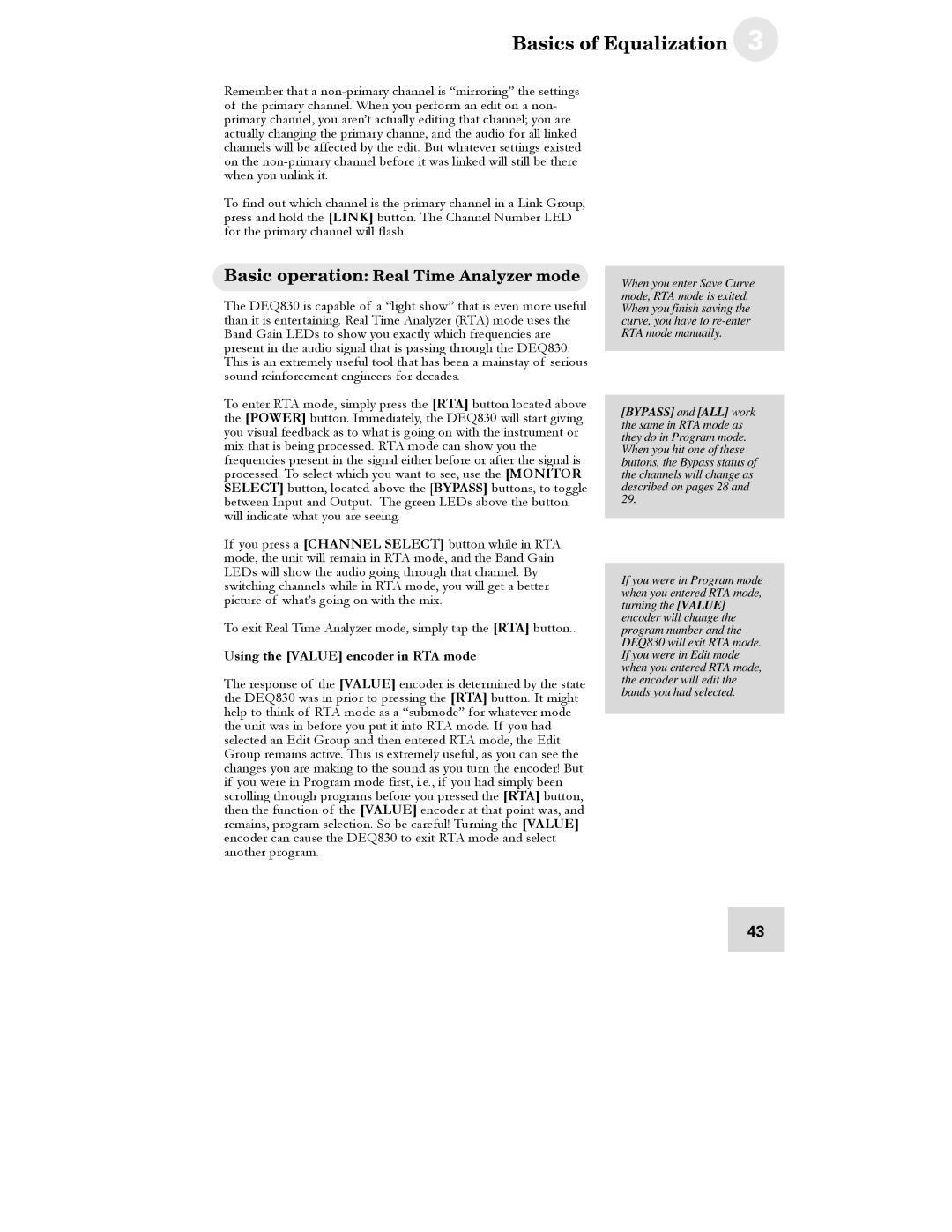
Basics of Equalization 3
Remember that a
To find out which channel is the primary channel in a Link Group, press and hold the [LINK] button. The Channel Number LED for the primary channel will flash.
Basic operation: Real Time Analyzer mode
The DEQ830 is capable of a “light show” that is even more useful than it is entertaining. Real Time Analyzer (RTA) mode uses the Band Gain LEDs to show you exactly which frequencies are present in the audio signal that is passing through the DEQ830. This is an extremely useful tool that has been a mainstay of serious sound reinforcement engineers for decades.
To enter RTA mode, simply press the [RTA] button located above the [POWER] button. Immediately, the DEQ830 will start giving you visual feedback as to what is going on with the instrument or mix that is being processed. RTA mode can show you the frequencies present in the signal either before or after the signal is processed. To select which you want to see, use the [MONITOR SELECT] button, located above the [BYPASS] buttons, to toggle between Input and Output. The green LEDs above the button will indicate what you are seeing.
If you press a [CHANNEL SELECT] button while in RTA mode, the unit will remain in RTA mode, and the Band Gain LEDs will show the audio going through that channel. By switching channels while in RTA mode, you will get a better picture of what’s going on with the mix.
To exit Real Time Analyzer mode, simply tap the [RTA] button..
Using the [VALUE] encoder in RTA mode
The response of the [VALUE] encoder is determined by the state the DEQ830 was in prior to pressing the [RTA] button. It might help to think of RTA mode as a “submode” for whatever mode the unit was in before you put it into RTA mode. If you had selected an Edit Group and then entered RTA mode, the Edit Group remains active. This is extremely useful, as you can see the changes you are making to the sound as you turn the encoder! But if you were in Program mode first, i.e., if you had simply been scrolling through programs before you pressed the [RTA] button, then the function of the [VALUE] encoder at that point was, and remains, program selection. So be careful! Turning the [VALUE] encoder can cause the DEQ830 to exit RTA mode and select another program.
When you enter Save Curve mode, RTA mode is exited. When you finish saving the curve, you have to
[BYPASS] and [ALL] work the same in RTA mode as they do in Program mode. When you hit one of these buttons, the Bypass status of the channels will change as described on pages 28 and 29.
If you were in Program mode when you entered RTA mode, turning the [VALUE] encoder will change the program number and the DEQ830 will exit RTA mode. If you were in Edit mode when you entered RTA mode, the encoder will edit the bands you had selected.
43
